Results 8,751 to 8,760 of 12096
Thread: Anandtech News
-
10-17-18, 03:34 PM #8751
Anandtech: AKiTiO Thunderbolt 3 Dock Pro with Aquantia 10 GbE
AKiTiO has announced its new Thunderbolt 3 dock for high-end mobile workstations. AKiTiO’s Thunderbolt 3 Dock Pro features a 10 GbE port enabled by an Aquantia chip, along with multiple USB Type-A ports, card readers, eSATA, and other connectors.
The Thunderbolt 3 Dock Pro from AKiTiO is aimed at creative professionals who happen to use 10 GbE Ethernet (or other multi-Gig options), so the vast majority of its owners right now will be from corporate space. In terms of connectors, the Thunderbolt 3 Dock Pro has three USB 3.1 Type-A ports (one on the front, two on the back), one eSATA header, a DisplayPort, a 10 GbE RJ45 port enabled by Aquantia’s AQtion AQC-107 silicon, a 6-pin power input, and two TB3 connectors with 15 W and 60 W power delivery.
The complexity of AKiTiO’s Thunderbolt 3 dock should be rather formidable as AQtion AQC-107 silicon connects using a PCIe interface, whereas eSATA requires a separate controller. To cool down the device, AKiTiO uses a fan that can still be turned off in a bid to make the dock whisper quiet.
AKiTiO has not announced details about pricing of its Thunderbolt 3 Dock Pro, but keeping in mind that this is the only TB3 docking solution for Apple’s MacBook Pro and other high-end laptops, we expect the device to carry a premium price tag.
Related Reading- Aquantia Multi-Gig: Single Chip USB 3.0 to 5G/2.5G Dongles Coming Soon
- AKiTiO’s Thunder3 10G Adapter Now Available: TB3-to-10GbE for Sub-$300
- AKiTiO's Node Lite Optane Drive: An External Intel 905P SSD in Exclusive Red
- Aquantia’s Gamer Edition AQtion AQN-107 10 GbE NIC Available
Gallery: AKiTiO Thunderbolt 3 Dock Pro: Aquantia’s 10 GbE, USB-A, Card Reader, eSATA, Etc

More...
-
10-17-18, 05:13 PM #8752
Anandtech: Samsung Starts Mass Production of Chips Using Its 7nm EUV Process Tech
Samsung Foundry on Wednesday said that it had started production of chips using its 7LPP manufacturing technology that uses extreme ultraviolet lithography (EUVL) for select layers. The new fabrication process will enable Samsung to significantly increase transistor density of chips while optimizing their power consumption. Furthermore, usage of EUVL allows Samsung to reduce the number of masks it requires for each chip and shrink its production cycle.
The maker of semiconductors says that the 7LPP fabrication technology enables a 40% area reduction (at the same complexity) along with a 50% lower power consumption (at the same frequency and complexity) or a 20% higher performance (at the same power and complexity). As it appears, usage of extreme ultraviolet lithography enables Samsung Foundry to place 40% more transistors inside its next-gen SoCs and reduce their power consumption, a very compelling proposition for mobile SoCs that will be used by the parent company inside its future flagship smartphones.
Samsung produces its 7LPP EUV chips at its Fab S3 in Hwaseong, South Korea. The company can process 1500 wafers a day on each of its ASML Twinscan NXE:3400B EUVL step and scan systems with a 280 W light source. The company does not say whether it uses pellicles that protect photomasks from degradation, but only indicates that usage of EUV enables it to cut the number of masks it requires for a chip by 20%.Advertised PPA Improvements of New Process Technologies
Data announced by companies during conference calls, press briefings and in press releases14LPP
vs 28LPP10LPE
vs 14LPE10LPE
vs 14LPP10LPP
vs 10LPE10LPU
vs
10LPE7LPP
vs 10LPPPower 60% 40% 30% ~15% ? 50% Performance 40% 27% >10% ~10% ? 20% Area Reduction 50% 30% 30% none ? 40%
This is a breaking news. We are adding details.
Related Reading:
- Samsung Foundry Updates: 8LPU Added, EUVL on Track for HVM in 2019
- Arm and Samsung Extend Artisan POP IP Collaboration to 7LPP and 5LPE Nodes
- Samsung Foundry Updates: 8LPU Added, EUVL on Track for HVM in 2019
- Samsung Foundry Roadmap: EUV-Based 7LPP for 2018, 3 nm Incoming
- Arm and Samsung Extend Artisan POP IP Collaboration to 7LPP and 5LPE Nodes
- Samsung’s 8LPP Process Technology Qualified, Ready for Production
- Samsung and TSMC Roadmaps: 8 and 6 nm Added, Looking at 22ULP and 12FFC
- TSMC Details 5 nm Process Tech: Aggressive Scaling, But Thin Power and Performance Gains
- TSMC Kicks Off Volume Production of 7nm Chips
More...
-
10-17-18, 09:25 PM #8753
Anandtech: Samsung Shares SSD Roadmap for QLC NAND And 96-layer 3D NAND
At Samsung's Tech Day event today in San Jose, the company shared their SSD roadmap for transitioning to 96-layer 3D NAND and introducing four bit per cell (QLC) NAND flash memory. Successors have been named for most of their current SSDs that use three bit per cell (TLC) NAND flash and are being updated with 96-layer 3D TLC, and new product lines using QLC NAND have been introduced.
Taking TLC to new heights
Most of the updates to the TLC-based SSDs are fairly straightforward NAND upgrades that use existing SSD controllers. The PM981 client NVMe SSD and the 970 EVO retail counterpart that use 64-layer 3D TLC will be succeeded by the PM981a and 970 EVO Plus respectively. Capacity options remain the same, ranging from 250GB to 2TB. The most significant performance improvements are to sequential write speeds, but the PM981a also brings significant random I/O improvements that almost catch it up to the 970 EVO and 970 EVO Plus.
The PM983 datacenter SSD that uses the same Samsung Phoenix controller as the above client/consumer drives is being replaced by the PM983a. This update brings a doubling of capacities, now allowing for up to 16TB (presumably only on NF1 and U.2 form factors). In the datacenter, SLC write caches are not used so the advertised write speeds are significantly lower than for the client/consumer drives, but there are still significant improvements here.
The PM971a client NVMe BGA SSD is getting a significant update in the new PM991 that roughly doubles random I/O and sequential write performance and improves sequential reads by about 50%.
The enterprise SAS product line is not seeing any major changes to performance or available capacities, but the update from the PM1643 to the PM1643a does improve random write performance by about 20%. The largest model remains 30.72TB.
The high-end enterprise NVMe drives are getting a major controller update that brings PCIe 4.0 support in addition to the NAND upgrade. This allows for much higher performance across the board, most notably with sequential read speeds reaching 8GB/s on the new PM1733 compared to 3.5GB/s on the PM1723b. The maximum available capacity has caught up to the SAS product line with the introduction of a 30.72TB model. The PM1733 also introduces dual-port PCIe capability to this product line, providing a migration path for SAS SSD users who require this reliability feature.
Rolling out QLC
Samsung's naming scheme for enterprise and OEM SSDs uses model names starting with SM for drives with MLC NAND, PM for TLC NAND, and now BM for QLC NAND. Four new QLC SSDs have been announced: the BM1733 and BM9A3 enterprise NVMe SSDs, the BM1653 enterprise SAS SSD, and the BM991 client NVMe SSD. All of these have obvious parallels with TLC-based PM-series models above, but Samsung has not yet shared detailed specifications for any of these QLC drives. Samsung also mentioned the 860 QVO SATA and 980 QVO NVMe client drives. Since these names don't fit into Samsung's OEM SSD naming scheme, we assume these are upcoming retail products, but Samsung hasn't shared any release plans.
Without release schedules or detailed technical specifications, it's hard to assess the state of Samsung's QLC efforts, but the sheer number of models makes it clear that Samsung sees QLC NAND as a very important part of their storage portfolio going forward.
Samsung also mentioned that in Q2 2019 they are planning to introduce a higher-performing 512Gb QLC die to complement their current 1Tb die. Samsung compared the performance of this new 512Gb die against an unspecified competitor's 1Tb QLC, claiming that Samsung's high-performance QLC will have 37% lower read latency and 45% lower program latency. Their slides suggested that the performance differences relative to Samsung's own 1Tb part could be even larger, but Samsung did not quantify this.
Second-Generation Z-NAND
The first products featuring the second generation of Samsung's low-latency Z-NAND flash memory will be the SZ1733 and SZ1735, high-end enterprise NVMe SSDs that differ primarily in the amount of overprovisioning. Samsung has announced that their second generation of Z-NAND will include a MLC version, but these drives are using the SLC version. Like the TLC-based PM1733, the new Z-NAND SSDs will also feature dual-port capability and PCIe 4.0 support. Sequential reads of up to 12GB/s are claimed, but this product line is all about random I/O, which Samsung hasn't detailed yet. Samsung demoed a 4TB model, significantly larger than the 800GB maximum for the first-generation SZ985.
More...
-
10-18-18, 08:48 AM #8754
Anandtech: HP Announces Z Club Device-as-a-Service Program: Hardware Bundles at $108+
In addition to launching “Boosted” versions of its ZBook notebooks, HP has also introduced its Z Club device-as-a-service (DaaS) program. Under the terms of the program, select HP customers will be able to lend certain hardware bundles at a fixed monthly payment, and get a special Z Concierge service. The Z Club will be initially available only to select HP customers, if the company finds it successful enough, it may expand it in the future.
The Z Club DaaS program is aimed at creative professionals, such as artists, graphics designers, photographers, and video editors. For each group HP will offer a special hardware bundle. Furthermore, it will offer a choice of components and accessories that users may install themselves and find out how certain hardware affects their workflow. Select customers of HP that will be offered membership in the Z Club will be able to tryout HP’s hardware and components bundle for free for 90 days and in that period, they will be able to configure systems however they see viable. In addition, Z Club members will be offered Z Concierge service available 24/7. The latter will provide recommendations concerning usage of hardware and software to simplify transition to HP Z workstations.
Initially, HP will offer six hardware packages for different workflows:
The Artist’s Bundle will include HP’s ZBook x2 with Pen, HP’s 24-inch DreamColor 24x display, a 1 TB external drive, wireless keyboard & mouse, collaboration software, as well as Z Concierge and next-day business service. Montly cost of this package will be at $156, exact specs are listed in the table below.
The Graphics Designer’s Bundle will include the HP ZBook x360 with Pen, HP’s DreamColor 24x monitor, a 1 TB external storage device, wireless keyboard & mouse, and the aforementioned software and services. This package will cost $167 a month.
The Video Editor’s Bundle will consist of either HP Z2 Tower or HP Z4 Tower desktop PCs, an HP Z38C curved display, or two 24-inch monitors (see the table for details). Depending on exact configuration, the package will cost from $183 to $210.
The Photographer’s Bundle will feature the HP Z mini workstation or HP ZBook x360 with Pen, a 24-inch display, and a printer. The package will be available for $108 to $180 a month, depending on exact hardware specs.
Keeping in mind that HP intends to offer its customers a choice of hardware to install themselves, actual monthly payments will differ from those of canonical bundles. Meanwhile, a quick analysis of hardware packages and their prices indicate that montly payments are about 27-34 times lower than the current cost of hardware. That said, it makes a great financial sense to rent the workstations when using them for less than 27 - 34 months. At the same time, it will be cheaper to buy hardware if you plan to use it for three years or more.
Buy HP ZBook x2 G4 on Amazon.comHP Z Club Hardware Bundles Configuration Approximate* Price of Hardware at HP.com Monthly Cost Artists's Bundle HP ZBook x2 with Pen
14-inch 4K IPS LCD
Intel Core i7-8650U
32 GB of DDR4-2133 RAM
1 TB PCIe SSD
NVIDIA Quadro M620 2 GB
+
HP DreamColor Z24x
+
Wireless Keyboard & Mouse
+
1 TB external drive
+
Services$5362 $156 Graphics Designer's Bundle HP ZBook Studio x360 with Pen
15.6-inch 4K LCD
Intel Core i7-8750H
32 GB of DDR4-2667 RAM
2×512 GB PCIe SSD
NVIDIA Quadro P1000 4 GB
+
HP DreamColor Z24x
+
Wireless Keyboard & Mouse
+
1 TB external drive
+
Services$5738 $167 Video Editor's Bundle 1 HP Z2 Tower
Intel Core i7-8700K
64 GB of DDR4-2667 RAM
Z Turbo 512 GB PCIe SSD
4 TB 3.5-inch 7200 RPM HDD
NVIDIA Quadro P5000 16 GB
+
HP DreamColor Z24x+ HP Z 24-inch LCD
+
1 TB external drive
+
Wireless Keyboard & Mouse
+
Services$5374 $183 Video Editor's Bundle 2 HP Z4 Tower
Intel Core i7-7820X
64 GB of DDR4-2667 RAM
Z Turbo 512 GB PCIe SSD
4 TB 3.5-inch 7200 RPM HDD
NVIDIA Quadro P5000 16 GB
+
HP DreamColor Z38C Curved LCD
+
1 TB external drive
+
Wireless Keyboard & Mouse
+
Services$7090 $210 Photographer's Bundle 1 HP Z2 Mini
Intel Core i7-8700
32 GB of DDR4-2400 RAM
Z Turbo 256 GB PCIe SSD
1 TB 3.5-inch 7200 RPM HDD
+
HP DreamColor 24x LCD
+
1 TB external drive
+
HP Photosmart Printer
+
Wireless Keyboard & Mouse
+
Services$2937 $108 Photographer's Bundle 2 HP ZBook x360 with Pen
15.6-inch 4K LCD
Intel Core i7-8750H
32 GB of DDR4-2667 RAM
2×512 GB PCIe SSD
NVIDIA Quadro P1000 4 GB
+
HP 24-inch
+
1 TB external drive
+
Wireless Keyboard & Mouse
+
HP Sprocket Printer
+
Services$5479 $180 Note *Since we do not know exact configuration, actual prices may be different than the ones we picked at HP.com on 10/15/2018.
Related Reading:
- HP Boosts ZBooks with Core i9, Quadro P2000/P5200, & Up to 128 GB DRAM
- HP Spring 2018 Range: ZBook, ZBook, ZBook
- HP Unveils EliteBook x360 1030 G3 Convertible: Quad-Core CPU, 700-Nits LCD, 18 Hrs
- HP Unveils Z2 Mini G4 SFF Workstations: Up to Six-Core Xeons, Pro GPUs
- HP Announces The Spectre Folio: Leather Laptop
More...
-
10-18-18, 09:58 AM #8755
Anandtech: The Corsair Force MP510 SSD (960GB) Review
The Corsair Force MP510 isn't the first retail Phison E12 drive to hit the shelves but it's the first one to hit our testbed. The Phison controller paired with Toshiba 3D TLC NAND gives Corsair their first credible contender in the high-end NVMe market segment.
More...
-
10-18-18, 11:24 AM #8756
Anandtech: Samsung Unveils Galaxy Book2: 12-Inch, Snapdragon 850 with X20 LTE, 20 Hrs
Samsung today has introduced the Galaxy Book2, its newest attempt to create an always on, always connected convertible PC. For the new 2-in-1 notebook, Samsung opted to use Qualcomm’s Snapdragon 850 supercharged mobile SoC and rates the battery life of the device to 20 hours. Like the rest of the Windows-on-Snapdragon systems, the Galaxy Book2 runs Windows 10 S. Meanwhile, unlike the original model, the Galaxy Book2 will be offered in only one configuration (at least initially).
The Samsung Galaxy Book2 detachable notebook comes with a 12-inch sAMOLED display featuring a 2160×1440 resolution and a 3:2 aspect ratio. The device is based on the Qualcomm Snapdragon 850 SoC (four Kryo 385 cores at 2.96 GHz, four Kryo 385 cores at 1.7 GHz, Adreno 630 GPU) which is accompanied by 4 GB of DRAM, and 128 GB of NAND flash storage. The system’s wireless connectivity includes Snapdragon X20 LTE modem (Cat 18, 5CA, 4x4 MIMO, up to 1.2 Gbps DL, up to 150 Mbps UL and 802.11ac Wi-Fi.
On the wired side of things, the Galaxy Book2 is outfitted with two USB Type-C connectors, a microSD card slot, and a 3.5-mm TRRS audio header. When it comes to imaging, the convertible PC uses an 8 MP rear camera, and a 5 MP front-facing sensor. As for audio, the system has a built-in microphone as well as Dolby Atmos-badged stereo speakers. Since the Galaxy Book2 is a convertible machine, it has the same set of sensors as tablets, including an accelerometer, a gyro, a light sensor, and a geomagnetic sensor. In addition, the system has a fingerprint reader for a biometric authentication.
The first-generation Galaxy Book used Intel’s dual-core 7th Gen Core m3 and Core i5 “Kaby Lake” processors along with a standalone LTE Cat 6 modem (up to 300 Mbps DL). The switch to Qualcomm’s Snapdragon 850 boosts both LTE performance and battery life of the laptop. Furthermore, without disclosing capacity of the batter it uses, Samsung rates Galaxy Book2 for up to 20 hours of autonomous work, up from 10 hours in case of the previous-gen convertible. It should be noted that the 256 GB SKU from the previous gen has not carried over.
Moving on to portability of the Galaxy Book2. Samsung claims that the system is 7.62 mm thick (0.3 inch) and weighs 840 grams (1.85 lbs), but does not elaborate whether it mentions the tablet itself, or the tablet with the keyboard.
Samsung’s Galaxy Book2 will be available online from Samsung, Microsoft, and AT&T, for $1000 starting November 2. Later in November the product will be available in retail from AT&T, Spring, and Verizon. While the price of the convertible laptop does not seem particularly cheap, it should be noted that the Galaxy Book2 bundles both the keyboard and stylus, rather than being sold separately (for up to $250 on competing products).Specifications of the Galaxy Book2 Model 12-e011nr Display 12-inch,
2160×1440
216 PPICPU Qualcomm Snapdragon 850
4 x Kryo 385 at 2.96 GHz4 x Kryo 385 at 1.7 GHzGraphics Adreno 630 GB RAM 4 GB Storage 128 GB Wi-Fi 802.11ac Wi-Fi Bluetooth ? WWAN Qualcomm X20 Gigabit LTE
Cat 18, 5CA, 4x4 MIMO, up to 1.2 Gbps DL, up to 150 Mbps ULUSB 3.0 2 × Type-CCameras Front 5 MP Rear 8 MP Other I/O Microphone, stereo speakers, audio jack, trackpad, MicroSD card reader, etc. Battery ? Wh Battery Life 20 hours Dimensions Width 287.5 mm | 11.32" Height 200.4 mm | 7.89" Thickness 7.62 mm | 0.3” (?) Weight Tablet 839 grams | 1.85 lbs (?) Tablet+KB 839 grams | 1.85 lbs (?) Price $1000 with keyboard and stylus
Related Reading- Lenovo Announces Yoga C630: The First Windows on Snapdragon 850
- Lenovo’s Miix 630 Snapdragon 835-Based 2-in-1 Now Available
- Qualcomm Announces Snapdragon 850: A Second Generation For Windows
- HP’s Snapdragon 835-Based Envy X2 2-in-1 Available for Pre-Order, Starts at $999
- Lenovo Unveils Miix 630 2-in-1: Windows 10 S, Snapdragon 835, Gigabit LTE, 20 Hrs
- ASUS Announces the NovaGo (TP370): A Snapdragon 835 based Windows 10 PC
- Microsoft Launches Windows 10 On ARM: Always Connected PCs
- Microsoft and Qualcomm Collaborate to Bring Windows 10 & x86 Emulation to Snapdragon Processors
More...
-
10-18-18, 04:41 PM #8757
Anandtech: What Next for 3D XPoint? Micron to Buy Intel's Share in 3D XPoint Fab
Micron on Thursday announced plans to acquire Intel’s stake in IM Flash Technologies, a joint venture between the two companies. IM Flash owns a fab near Lehi, Utah, which is the only producer of 3DXPoint memory that Intel uses for its premium Optane-branded solid-state storage products. Once the transaction is completed, Intel will have to ink a supply agreement with Micron to get 3D XPoint memory after the current agreement finishes at the end of 2019. This will have important ramifications for Intel's 3D XPoint-based portfolio.
This is a breaking news. We are adding details.
Related Reading:
- Intel and Micron To Dissolve 3D XPoint Partnership After 2019
- Intel And Micron To Discontinue Flash Memory Partnership
- Micron Starts Construction of Its Third NAND Fab in Singapore
- Micron Discontinues Lexar Business, Plans to Focus on Higher-Margin Products
Source: Micron
More...
-
10-19-18, 08:07 AM #8758
Anandtech: The Intel 9th Gen Review: Core i9-9900K, Core i7-9700K and Core i5-9600K T
Intel’s newest line of desktop processors bring with them a number of changes designed to sway favor with performance enthusiasts. These new parts bring Intel’s consumer processors up to eight cores, with higher frequencies, better thermal connectivity, and extra hardware security updates for Spectre and Meltdown. The only catch is that you’re going to need a large wallet and a big cooler: both price and power consumption hit new highs this time around.
More...
-
10-19-18, 11:22 AM #8759
Anandtech: Samsung Shows Off 256 GB DDR4 RDIMM: Coming to Servers Soon
Samsung this week demonstrated its first 256 GB memory module for upcoming servers. The new Registered DIMM (RDIMM) is based on Samsung’s 16 Gb DDR4 memory devices introduced earlier this year and takes advantage of the company’s 3DS (three-dimensional stacking) packaging. The new module will offer higher performance and lower power consumption than two 128 GB LRDIMMs used today.
Samsung’s 256 GB DDR4 Registered DIMM with ECC carries 36 memory packages featuring 8 GB (64 Gbit) of capacity each, along with IDT’s 4RCD0229K register chip (to buffer address and command signals and increase the number of ranks supported by a memory channel). The packages are based on four single-die 16 Gb components that are interconnected using through-silicon vias (TSVs). Architecturally, the 256 GB module is octal ranked as it features two physical ranks and four logical ranks.
On a bit more of a technical note here, it's very interesting to point out that these new DIMMs are Registered DIMMs (RDIMMs) and not Load-Reduced DIMMs (LRDIMMs). Normally, LRDIMMs are required for high capacity configurations, with these style DIMMs relying on additional buffering that hurts power consumption and latency versus RDIMMs. Instead, because the latest server platforms (AMD EPYC, Intel Xeon Scalable, etc.) have shifted their memory requirements to natively support support octal-ranked modules in both slots - at the cost of being limited to two slots per channel in total - LRDIMMs are not necessary to maximize the memory capacities of these new servers. As a result, simpler RDIMMs can be used instead. I suspect this is a big reason why Samsung decided to go with a 256 GB RDIMMs, as they are a natural pairing with the latest servers.
So what can you do with 256 GB memory modules? Intel’s upcoming Xeon Scalable “Cascade Lake” processors appear to support up to 3.84 TB of memory across all 12 DIMM slots, so by installing 12 256 GB RDIMMs, a dual-socket server could get 6 TB of memory. AMD’s existing EPYC processors officially support up to 128 GB LRDIMM memory modules and up to 2 TB of memory in total, which is logical as AMD has not yet validated 256 GB RDIMMs. If AMD finds 256 GB RDIMMs viable for its platform, it can support them by adjusting microcode of its existing EPYC processors, or just validating them with its upcoming 7nm EPYC "Rome" CPUs. In any case, 256 GB modules can enable up to 4 TB of memory per socket and up to 8 TB of RAM per 2P box in case of the AMD server platform.
Besides capacity and lower latencies when compared to LRDIMMs, a single 256 GB RDIMM will also offer considerably lower power consumption than two 128 GB LRDIMMs used today. This is partly because Samsung uses its 16 Gb memory devices made using its 10nm-class process technology, and partly because it does not use power-hungry iMB and accompanying ICs.
Samsung did not disclose precise specs of its 256 GB RDIMM, but do not expect its frequency to be significantly higher than the currently common DDR4-2400 & DDR4-2667 speeds. Availability of the modules will in turn depend on validation by CPU designers and server makers, which will take some time. Samsung also isn't likely to ever publish an official MSRP for the DIMMs since they're primarily aimed at a very niche market of server operators, but just to add some context, Crucial sells its 128 GB LRDIMMs for $3,300 today, so higher-capacity modules will be priced higher still.
Buy Samsung 64 GB DDR4-2400 CL17 ECC RDIMM on Amazon.com
Related Reading:
- Samsung Demos 64 GB RDIMM Based on 16 Gb Chips, Promises 256 GB LRDIMMs
- Samsung Kicks Off Mass Production of 64GB RDIMMs Using 16Gbit Chips
- Samsung Unveils 32 GB DDR4-2666 SO-DIMMs
- Samsung Adds 32 GB UDIMMs to Memory Lineup
More...
-
10-22-18, 11:31 AM #8760
Anandtech: Intel's Response: Micron’s Control of 3D XPoint Fab Will Not Disrupt Optan
Intel late on Friday said that Micron’s intention to gain full control of the IMFT joint venture will not interrupt its plans concerning products based on 3D XPoint memory. The company is confident that it will have enough time to start production of 3D Xpoint memory after Micron exercises its option to buy Intel’s stake in IMFT.
Micron currently controls 51% of IMFT, its joint venture with Intel, and has a right to buyout Intel’s share under certain conditions. After Micron proposes to buy Intel’s stake, as Micron has signified it intends to do next year, the deal will take up to twelve months to close and during that time the fab that exclusively makes 3D XPoint will be working as usual, and will make the memory for Intel Optane-branded products at near manufacturing cost. Furthermore, even after the deal closes, the fab may continue to produce memory for Intel on a foundry basis, which means that that Intel and Micron will have to come to an agreement (and price may increase). What is important is that Intel has the technical capability to produce 3D XPoint memory in different locations as well.
Intel has already finalized its Optane roadmap for the coming quarters and Micron’s intentions to gain 100% control of the fab near Lehi, Utah, will not disrupt it those intentions, Intel has said.
The full statement is presented below:
Micron’s statement is a pre-announcement. They can’t officially make the call until January 1, 2019. The operation of the IMFT factory would not change until after the close of the call, which is at Intel’s discretion for up to one year. There is no near-term change to Intel’s plans in the coming quarters—this has been part of our planning for some time now. Intel has a number of manufacturing options available to us within the time window. We’ve been shipping a broad portfolio of Intel Optane technology products for over a year with a continually expanding product line. We will continue to lead the industry with this exciting new technology.
Related Reading- What Next for 3D XPoint? Micron to Buy Intel's Share in 3D XPoint Fab
- Intel and Micron To Dissolve 3D XPoint Partnership After 2019
- Intel And Micron To Discontinue Flash Memory Partnership
- Micron Starts Construction of Its Third NAND Fab in Singapore
- Micron Discontinues Lexar Business, Plans to Focus on Higher-Margin Products
More...
Thread Information
Users Browsing this Thread
There are currently 59 users browsing this thread. (0 members and 59 guests)




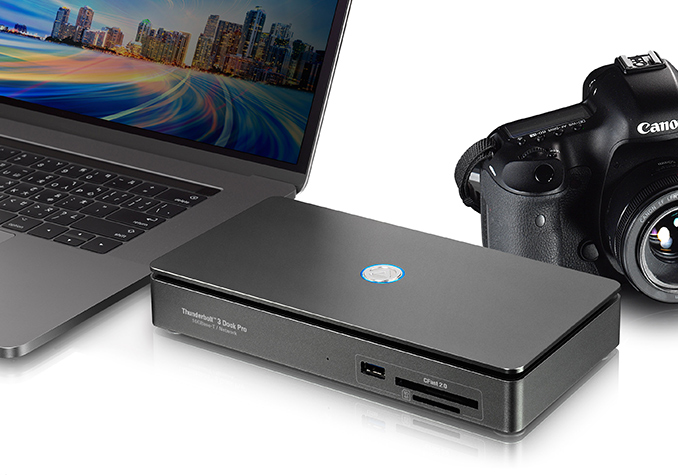
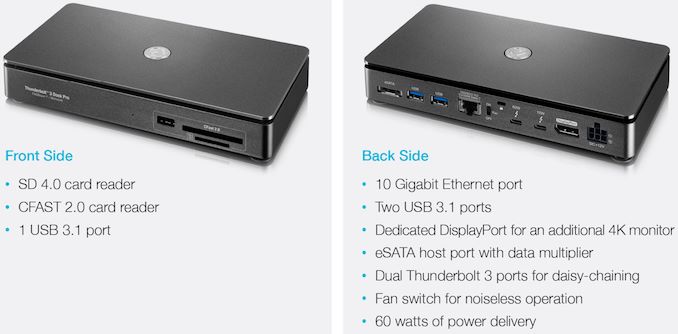

 Quote
Quote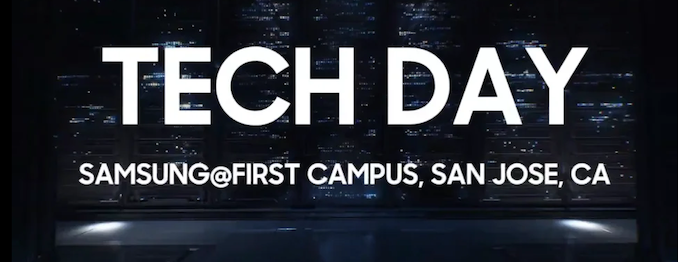
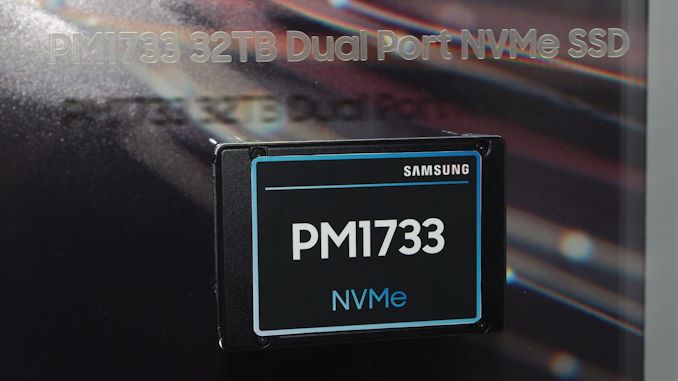
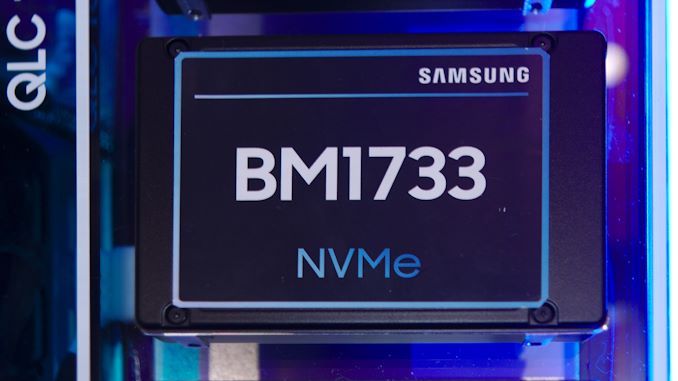

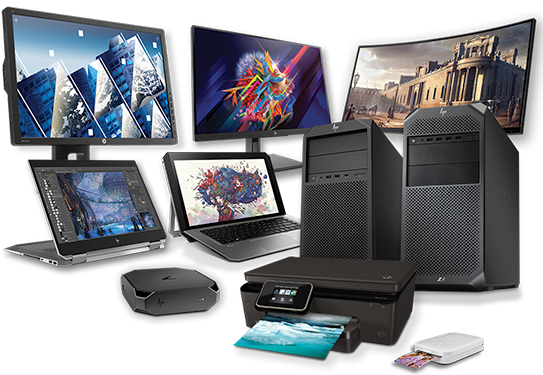

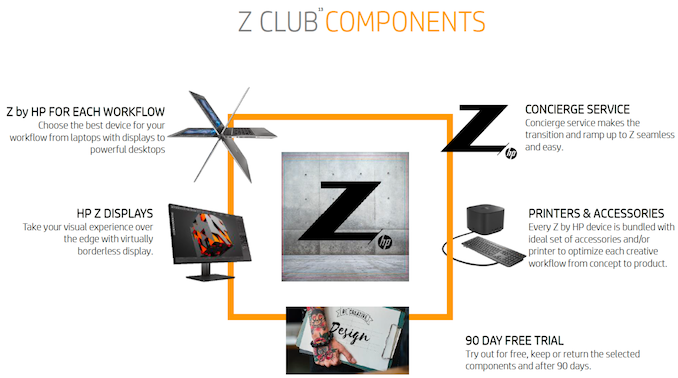


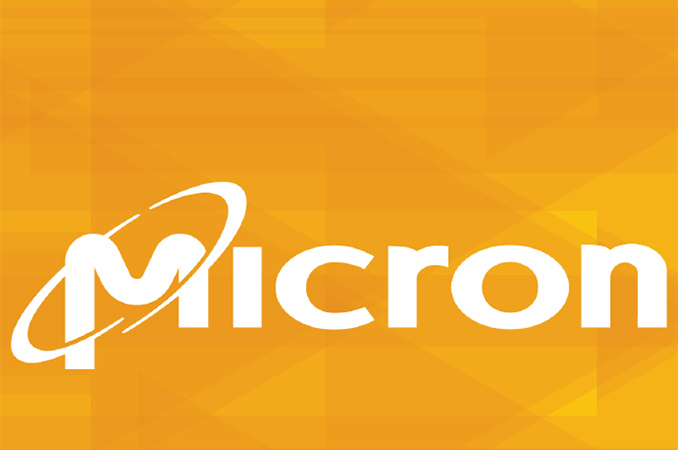
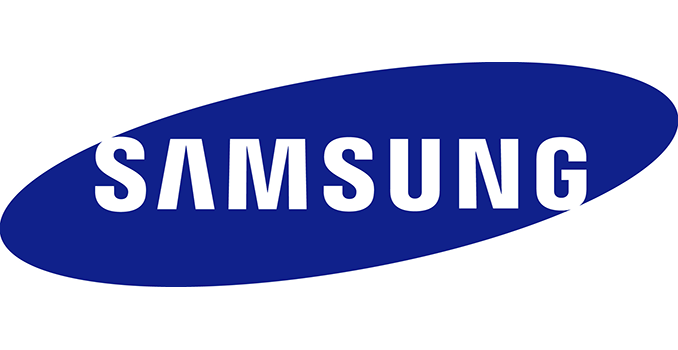
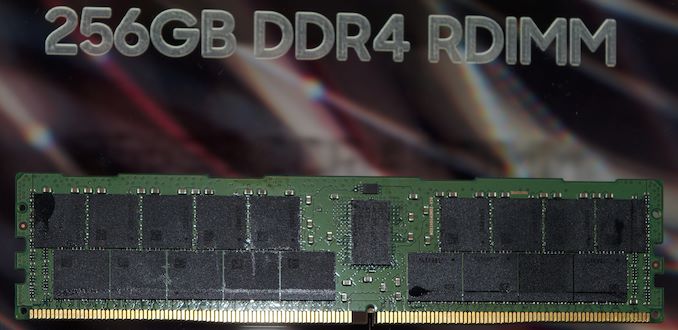
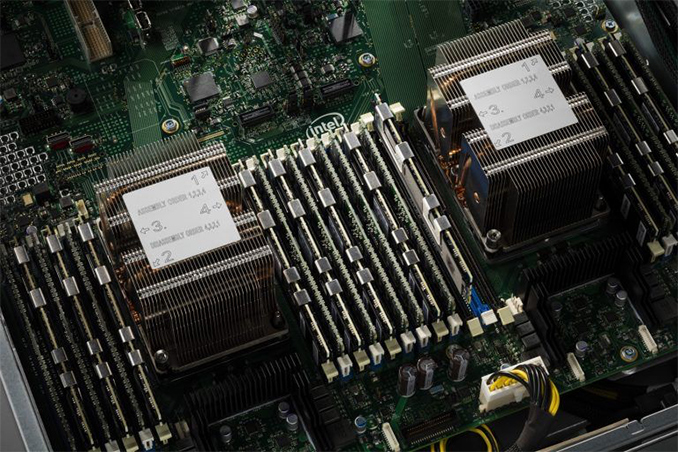
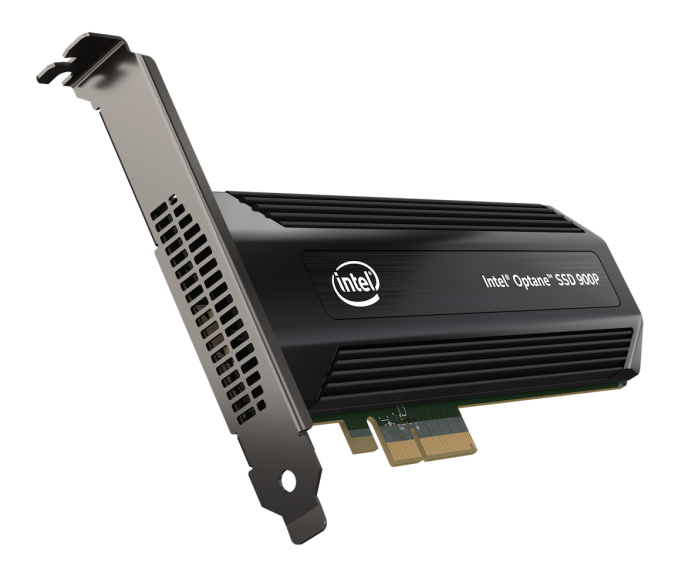
















Bookmarks